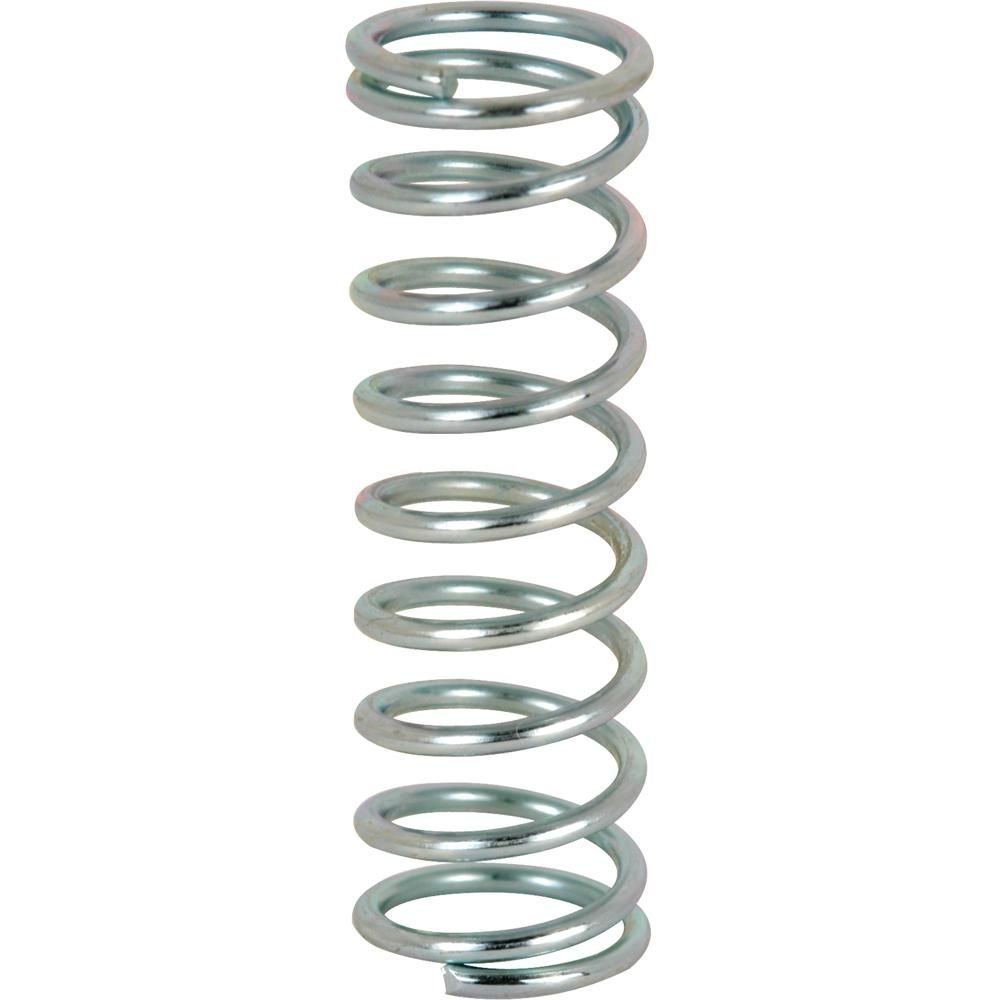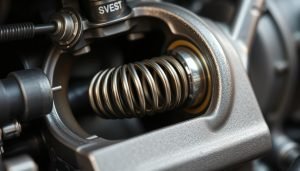We have included a detailed list of key terms related to springs and their definitions to help you better understand and utilize our products. Whether you are an engineer, designer, or professional interested in spring technology, this table will provide you with a valuable reference. By exploring these terms, you will learn more about spring types, characteristics, test methods, and manufacturing processes, helping you make more informed decisions about your project.
Glossary of technical terms for springs
| Term | Opis |
|---|---|
| Active Coils (effective coils, working coils) | The coils of a spring that at any instant are contributing to the rate of the spring. |
| Axial Load | The force applied along the axis of a spring. |
| Buckling | Bowing or lateral deflection of compression springs when compressed, related to the slenderness ratio (L/D). |
| Buckling Load | The critical load at which a compression spring will bend or buckle. |
| Closed Ends | Ends of compression springs where pitch of the end coils is reduced so that the end coils touch. |
| Sprężyna dociskowa | A spring whose dimension, in the direction of the applied force, reduces under the action of that force. |
| Compression Test | A test carried out by pressing a spring to a specific length a specific number of times. |
| Creep | The change in length of a spring over time when subjected to a constant force. |
| Deflection | The relative displacement of the ends of the springs under the application of a force. |
| Dynamic Load | A load that varies in magnitude, direction, or location over time. |
| Elastic Deformation | The deformation that takes place when a material is subjected to any stress up to its elastic limit. Upon removal of the force causing this deformation, the material returns to its original size and shape. |
| Elastic Limit (Limit of Proportionality) | The highest stress that can be applied to a material without producing permanent deformation. |
| End Fixation Factor | A factor used in the calculation of buckling to take account of the method of locating the end of the spring. |
| Sprężyna przedłużająca | A spring whose length, in the direction of the applied force, increases under the application of that force. |
| Fatigue Limit | The value, which may be statistically determined, of the stress condition below which material may endure an infinite number of stress cycles. |
| Fatigue Strength (Endurance Limit) | A stress condition under which a material will have a life of a given number of cycles. |
| Fatigue Test | A test to determine the number of cycles of stress that will produce failure of a component or test piece. |
| Fatigue | The phenomenon that gives rise to a type of failure which takes place under conditions involving repeated or fluctuating stresses below the elastic limit of the material. |
| Finish | A coating applied to protect or decorate springs. |
| Długość dowolna | The length of a spring when it is not loaded. NOTE: In the case of extension springs this may include the anchor ends. |
| Grinding | The removal of metal from the end faces of a spring by the use of abrasive wheels to obtain a flat surface which is square with the spring axis. |
| Helical Spring | A spring made by forming material into a helix. |
| Helix Angle | The angle of the helix of a helical coil spring. |
| Hysteresis | The lagging of the effect behind the cause of the effect. A measure of hysteresis in a spring is represented by the area between the loading and unloading curves produced when the spring is stressed within the elastic range. |
| Index | The ratio of the mean coil diameter of a spring to the material diameter for circular sections or radial width of cross section for rectangular or trapezoidal sections. |
| Inside Coil Diameter of a Spring | The diameter of the cylindrical envelope formed by the inside surface of the coils of a spring. |
| Initial Tension | The part of the force exerted, when close coiled spring is axially extended, that is not attributable to the product of the theoretical rate and the measured deflection. |
| Loop (eye, hook) | The formed anchoring point of a helical spring or wire form. When applied to an extension spring, it is usually called a loop. If closed, it may be termed an eye and if partially open may be termed a hook. |
| Modulus of Elasticity | The ratio of stress to strain within the elastic range. NOTE: The modulus of elasticity in tension or compression is also known as Young’s modulus and that in shear as the modulus of rigidity. |
| Open End | The end of an open coiled helical spring in which the helix angle of the end coil has not been progressively reduced. |
| Outside Coil Diameter | The diameter of the cylindrical envelope formed by the outside surface of the coils of a spring. |
| Overstress | Stress that exceeds the material’s yield strength, potentially causing permanent deformation. |
| Permanent Set (Set) | The permanent deformation of a spring after the application and removal of a force. |
| Pitch | The distance from any point in the section of any one coil to the corresponding point in the next coil when measured parallel to the axis of the spring. |
| Prestressing (Scragging) | A process during which internal stresses are induced into a spring. NOTE: It is achieved by subjecting the spring to a stress greater than that to which it is subjected under working conditions and higher than the elastic limit of the material. The plastically deformed areas resulting from this stress cause an advantageous redistribution of the stresses within the spring. Prestressing can only be performed in the direction of applied force. |
| Rate (Stiffness) | The force that has to be applied in order to produce unit deflect. |
| Relaxation | Loss of force of a spring with time when deflected to a fixed position. NOTE: The degree of relaxation is dependent upon, and increases with, the magnitude of stress, temperature and time. |
| Safe Deflection | The maximum deflection that can be applied to a spring without exceeding the elastic limit of the material. |
| Screw Insert | A plug screwed into the ends of a helical extension spring as a means of attaching a spring to another component. The plug has an external thread, the diameter, pitch and form of which match those of the spring. |
| Śrutowanie | A cold working process in which shot is impacted on to the surfaces of springs thereby inducing residual stresses in the outside fibres of the material. NOTE: The effect of this is that the algebraic sum of the residual and the applied stress, resulting in the improved fatigue life of the component. |
| Solid Force | The theoretical force of a spring when compressed to its solid length. |
| Solid Length | The overall length of a helical spring when each and every coil is in contact with the next. |
| Space (Gap) | The distance between one coil and the next coil in an open helical spring measured parallel to the axis of the spring. |
| Spring Seat | The part of a mechanism that receives the ends of a spring and which may include a bore or spigot to centralize the spring. |
| Spring Rate (Constant) | The amount of force required to compress or extend a spring by one unit of length. |
| Spring Index | The ratio of the mean coil diameter to the wire diameter. |
| Stała sprężystości (k) | A constant that relates the force exerted by a spring to the displacement produced (also known as stiffness). |
| Static Load | A load applied to a spring without causing movement or displacement. |
| Stress (Bonding Stress, Shear Stress) | The force divided by the area over which it acts. This is applied to the material of the spring, and for compression and extension springs is in torsion or shear, and for torsion springs is in tension or bending. |
| Stress Correction Factor | A factor that is introduced to make allowance for the fact that the distribution of shear stress across the wire diameter is not symmetrical. NOTE: This stress is higher on the inside of the coil than it is on the outside. |
| Stress Relieving | A low temperature heat treatment carried out at temperatures where there is no apparent range in the metallurgical structure of the material. The purpose of the treatment is to relieve stresses induced during manufacturing processes. |
| Set Removal | The process of compressing or extending a spring to remove initial set and stabilize its dimensions. |
| Variable Pitch Spring | A helical spring in which the pitch of the active coils is not constant. |
| Średnica przewodu | The thickness of the wire used to make a spring. |
| Yield Strength | The stress at which a material begins to deform plastically. |






